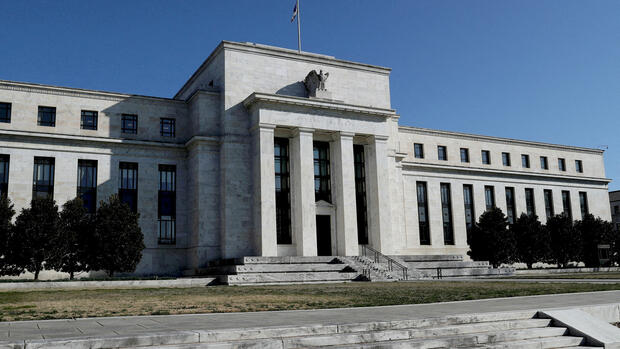The inflation data is one of the important factors for the current course in US monetary policy.
(Photo: Reuters)
new York The US Federal Reserve (Fed) has kept interest rates stable for the first time in more than a year after ten consecutive hikes. At the end of the two-day meeting, the Federal Open Market Committee decided not to raise interest rates and left the key interest rate unchanged in the range of 5.0 to 5.25 percent. This was announced by the Fed on Wednesday evening in Washington.
The decision was unanimous. Monetary policymakers, however, braced investors for fresh rate hikes. There could be two more interest rate hikes, according to the Fed’s economic forecasts, which were also published on Wednesday. That spoiled the mood for investors. The Dow lost around one percent within a few minutes. The S&P was down 0.7 percent. The tech-heavy Nasdaq fell 0.5 percent.
The interest rate pause was largely expected. The Fed wanted to “collect additional information and assess the impact of the rate hikes on monetary policy,” it said on Wednesday. It takes around 18 months for the full effects of interest rate hikes to unfold in the economy, as economists have repeatedly pointed out in recent weeks.
The Fed was also backed by the latest inflation data. Accordingly, the increase in consumer prices in the USA weakened noticeably in May. Consumer prices rose by 4.0 percent compared to the same month last year. In the previous month, the rate was still 4.9 percent. The current rate is the lowest since March 2021, however, inflation is still a long way off the Fed’s 2 percent target.
In the fight against high inflation, the central bank had opted for interest rate hikes of 0.75 percentage points, some of which were considerable. However, the Fed had recently slowed down the pace significantly.
Cautious monetary authorities
According to the Fed’s statement, the economy will continue to grow at a moderate pace. However, the banking crisis in March, in which a number of regional banks had to be sold off, made the currency watchdogs cautious.
The Fed now has to do a difficult balancing act. She wants to let the many interest rate hikes of the past few months take effect without putting too much strain on the economy. At the same time, it has not yet reached its goal in the fight against inflation. The good mood on the stock market is becoming counterproductive. The same applies to US house prices, which have recently risen again slightly.
More to come.
